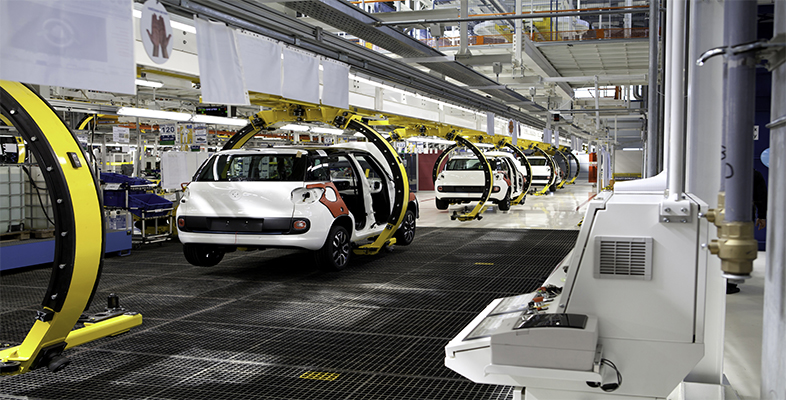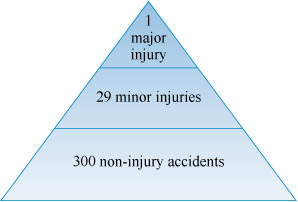2.1 Accident triangle
The first detailed study of the cost of accidents was made by Herbert Heinrich (1886–1962). As part of this work, Heinrich (1931) developed the concept of a non-injury accident. He defined this as an unintended event that causes property loss by damage to plant, equipment or materials, but does not cause actual injury, although it may have the potential to do so. In his work with around 1500 organisations, Heinrich concluded that for every major injury, there are 29 minor injuries and 300 accidents where no injury takes place. This is illustrated in the ‘accident triangle’ in Figure 4. Other versions of the triangle include another stage at the base that quantifies the even larger number of ‘near misses’ – events that could easily have led to accidents.
This triangle illustrates the idea that before the one accident that causes major injury, there are many other incidents that occur leading up to it. For example, if a trip hazard in a workplace is not removed, then many people will stumble but not hurt themselves, a few will trip up and suffer from minor bruising or perhaps a sprain, but one person might fall and break a limb. In terms of health and safety, the role of engineering practice is to recognise the non-injury and minor injury events as they occur, and to put in measures to prevent them from reoccurring. This in turn helps to prevent the major injury events at the top of the triangle from happening.
A commonly asked question at interviews for people seeking chartered engineer status is ‘who is responsible for health and safety in your organisation?’ How would you answer this question in relation to your workplace, another organisation that you may be involved with, or your home?
It is tempting to talk in terms of organisational charts or perhaps to name the safety manager, but a better answer is to simply say ‘everybody’. All staff, subcontractors and even visitors have a responsibility to behave in a safe manner and to report potential accidents that they notice.

